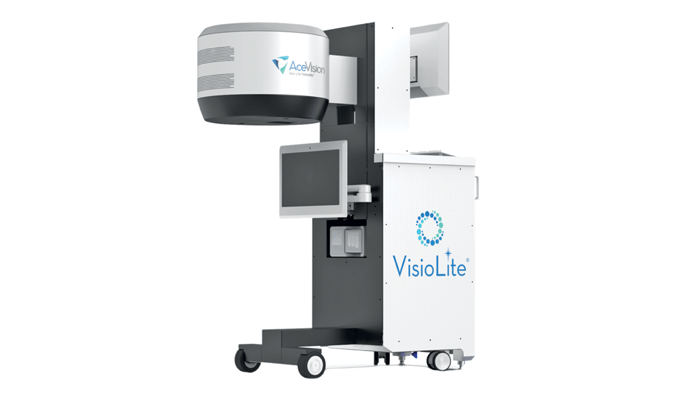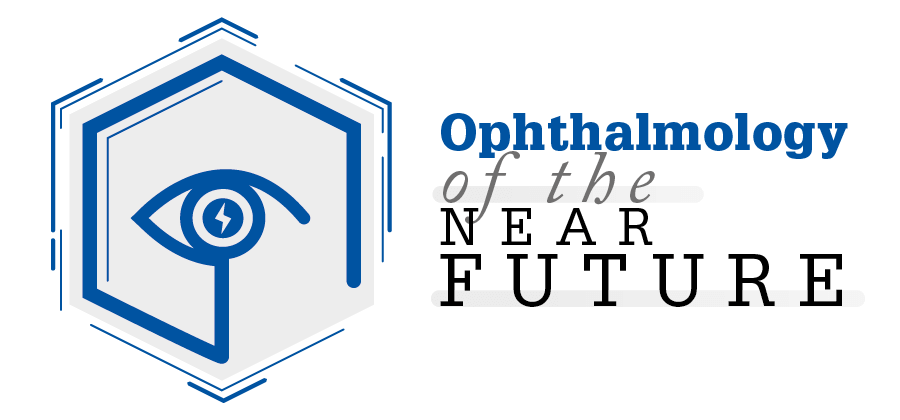
Laser Scleral Microporation (LSM) is a therapy which represents the first biomechanical solution to the biomechanical problems of progressive presbyopia. The therapy is performed using the VisioLite® Ophthalmic Laser system developed by Ace Vision Group (AVG).
Today, having no biomechanical option able to meet the loss of dynamic range of focus (DRoF) that occurs with progressive presbyopia, the need remains unmet. Current solutions involve the exchange of refractive power either at the cornea or the lens with the newest solution being a variety of pharmacological miotic eye drops that artificially stimulate the iris muscle to create a “pinhole effect” to see more clearly at near.
As cross-linked proteins accumulate over time, they damage cells and tissues, resulting in increased tissue stiffness and the slowing down of processes. The lens stiffness and ocular rigidity that increases in the sclera impacts the biomechanical needed to maintain our youthful DRoF which allows us to see clearly at all distances. Similar to Botox®, used to treat the progressive and persistent problem of wrinkles that occur with age, LSM is focused on a resolvable but progressive problem that must be addressed over an aging life cycle. Both therapies address the aging problem through minimally invasive and quick therapeutic applications that are immediately effective and can be dosed over time.
Laser Scleral Microporation (LSM), represents an innovative solution to tackle ocular rigidity by uncrosslinking scleral microfibrils to decrease biomechanical stiffness allowing a recovery of DRoF function inside of the eye that lie beneath the rigid scleral tissue all done without touching the optics of the eye. Since ocular rigidity is correlated with age-related eye diseases, such as presbyopia and AMD, the LSM therapy may have far reaching ocular health benefits.
The VisioLite® Ophthalmic Laser’s compact footprint allows the LSM procedure to be easily performed in an in-office environment. The touchless, painless therapy is completed in 10 minutes for both eyes with no down time to the patient allowing LSM to be the first ‘lunch time’ procedure. The minimally invasive LSM procedure brings opportunity for an ophthalmic practice to have an adjunct or primary presbyopia therapeutic option to offer a large unmet population of patients.
Unlike all other devices, which work on the pupillary axis, the VisioLite works on areas of the eye that don’t impact the patient’s distance vision. The aim of LSM is to rejuvenate the ability of the eye to achieve DRoF for all distances while not affecting optics. Additionally, the capability to restore DRoF function gives patients with refractive errors in the presbyopic age range an option to receive Laser Vision Correction (LVC) without exchanging distance correction glasses for presbyopic reading glasses. This would open the door to a new stream of patients that could now enjoy a glasses free life for distance, near and everything in between and an added revenue stream for refractive surgeons to do combination LVC and LSM procedures for presbyopes.
The future of presbyopia therapeutics is only in its infancy. Pharmacological therapeutics in the form of Miotic drops have just entered the field and biomechanical Microporation Therapeutics in the form of LSM is in an early clinical stage and set to enter the market in 2023.
LSM has the potential to redefine presbyopia therapeutics, bringing forth an innovative solution to presbyopia that can be tailored to each patient’s progression through the aging process. Such a procedure ultimately has the capabilities to address the presbyopic loss of DRoF through progressive vision recovery for those already in various stages of utilizing reading appliances. In addition, LSM has the potential to provide vision loss prevention to those at younger ages possibly delaying or reducing the need for reading appliances out further in the aging cycle. Unlocking all of these potentially groundbreaking benefits of the Microporation Therapeutics innovations is an exciting aspect of AVG’s current innovation.

